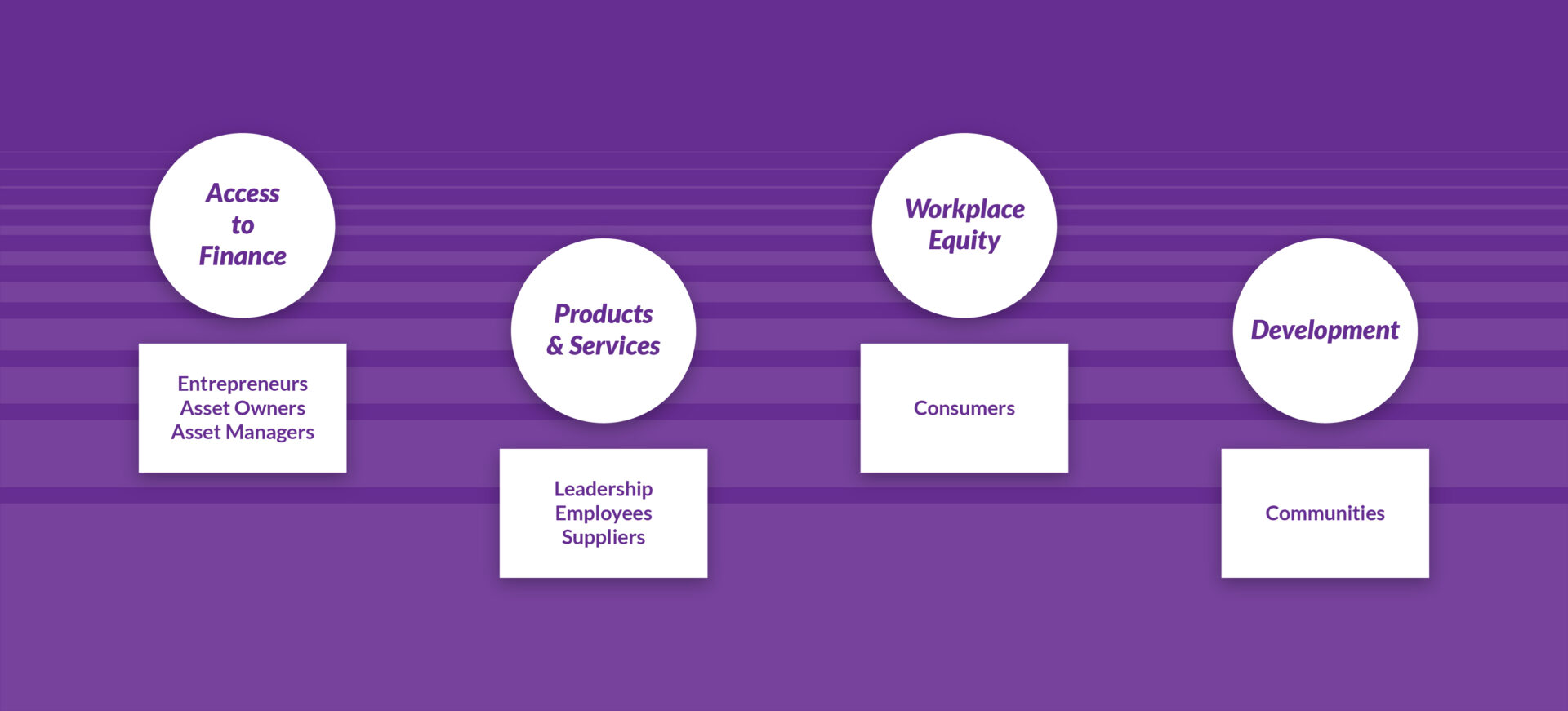Gender Lens Investing

Defined as ‘investments made into companies, organisations, and funds with the explicit intent to create a positive impact on gender’, gender lens investing entails different lenses and stakeholders. An integrated framework of Gender Lens Investing, developed by the founder of Gender Lens Project, is presented below.
|
Lens |
Stakeholders | Theoretical Perspectives | ||
| Intersectional | Social & structural |
Institutional |
||
| Access to finance | Entrepreneurs
Asset Owners Asset Managers |
Women with additional disadvantages (ethnic minorities, class, sexual orientation) find it more difficult to access finance | Lesser access to education (particularly in management fields), lower assets, care responsibilities, legal discrimination etc. add hurdles for women entrepreneurs | Selection criteria
Track record requirements How risk and returns are calculated |
| Workplace Equity | Leadership
Employees Suppliers |
Is it more difficult for people with overlaying dimensions of disadvantage to be recruited, be procured from and advance professionally | Overrepresentation in unpaid, informal, low-productivity or low-pay work
Pay gaps Parental leaves Safe working space Glass ceiling |
Recruitment policies and practices
Promotion policies and practices Conscious or unconscious bias |
| Products & Services | Consumers | Beyond gender, what else adds to difficulty in access to products and services? | Low access to markets (physical proximity or connectivity) | Value chains decision making (inc. in terms of marketing products to people) |
| Development | Communities | How inclusive is community consultation? | Social norms
Access to public life, including due to care responsibilities |
Participatory practices (local community level) VS tokenism |
There is a classed and gendered relationship between economy and social reproduction which is not only detrimental by being unequal but also has an economic cost.
Why is gender lens investing relevant?
- Gender equality is an important objective as well as a crucial Sustainable Development Goal
- Women tend to spend 2 to 10 times more time doing unpaid work compared to men, and the value of women’s unpaid work is estimated at $10 trillion annually
- Crises tend to hit different genders differently, including due to social factors. Gender impact of COVID19 is estimated to cost $1 trillion by 2030 and women’s jobs are 1.8X more vulnerable due to COVID19, compared to men’s.
- Gender equality in economic participation can make significant contribution to the economy
- Women’s equal economic participation could increase the global GDP by $28 trillion.
- Women have an estimated global purchasing power of $15 trillion.
- Companies with gender diversity initiatives have lower staff turnover and absenteeism, and higher employee satisfaction and retention.
- Companies led by gender diverse boards and leadership have shown outperformance in share prices, have faster exits, higher revenue and higher IRR.
- Diversity in value chains can provide high quality products, customer loyalty and lower cost of procurement.
Reaching an unserved or underserved segment of the society can not only bring equality but also has high potential for value addition